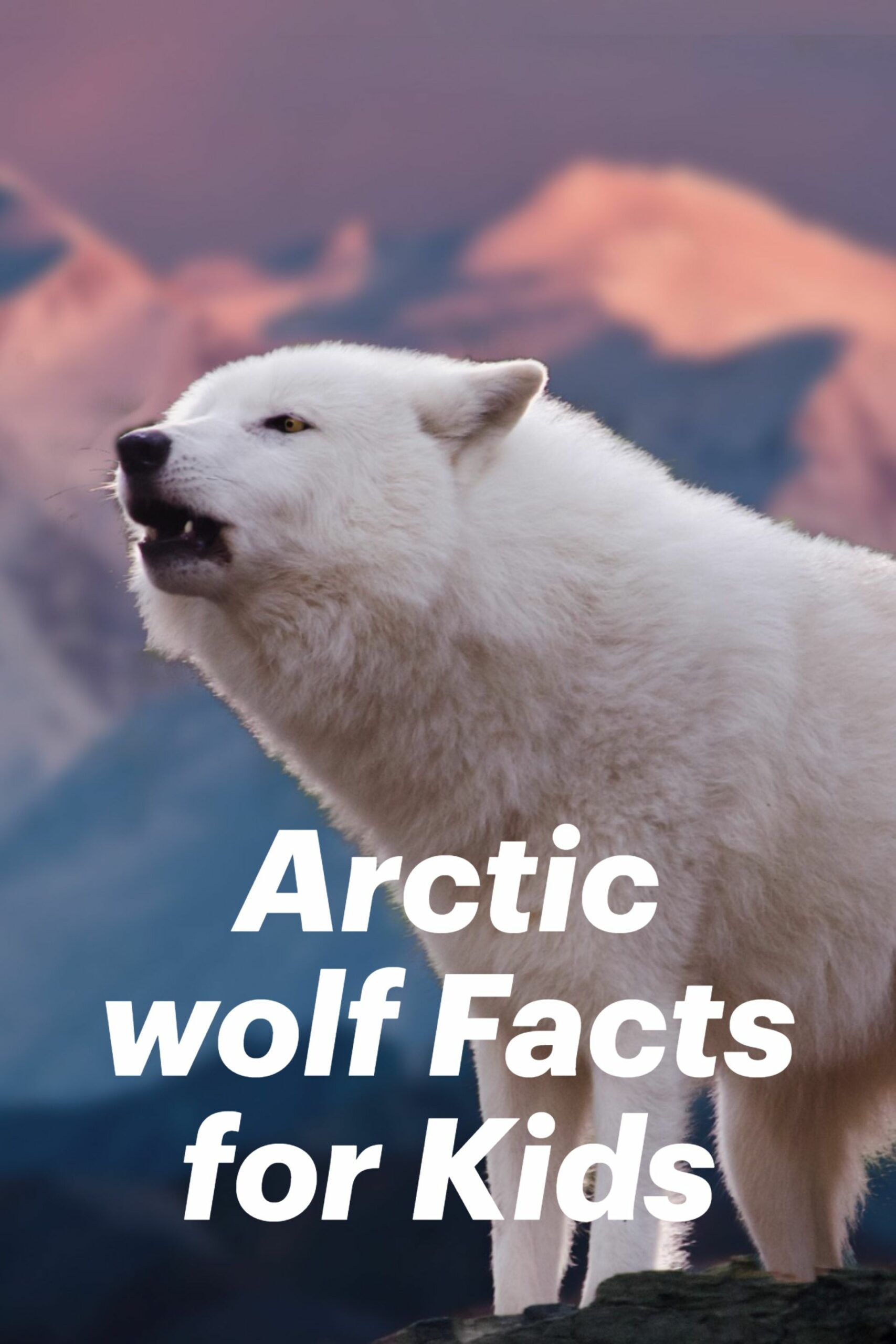Arctic wolves, often shrouded in the mystique of their frozen domain, are truly remarkable creatures. From their specialized adaptations for surviving extreme cold to their complex social structures and cooperative hunting techniques, these majestic animals offer a glimpse into the wonders of nature’s resilience. Let’s embark on a journey to the High Arctic and uncover the fascinating secrets of these icy predators.
Unveiling the Arctic Wolf’s Icy Adaptations
Built for a Frozen World
Imagine thriving in temperatures that plummet to -70°F (-57°C). Arctic wolves, smaller and more compact than their gray wolf cousins, are perfectly equipped for this frigid existence. Their reduced body size minimizes heat loss, a crucial advantage in the Arctic’s extreme cold. Shorter snouts and smaller ears further reduce surface area, conserving precious body heat. A thick, double-layered coat acts as a natural insulator, trapping warm air close to their skin and providing exceptional protection against the elements. Thick paw pads, covered in fur, function like built-in snowshoes, aiding in traversing icy terrain and preventing frostbite.
A Camouflage of White (and Sometimes Not!)
The iconic image of the Arctic wolf is often one of pristine white fur, blending seamlessly with the snowy landscape. However, their coat color can vary, ranging from grayish white to even slightly black, depending on the season and individual genetics. This adaptable camouflage is a vital hunting strategy, allowing them to approach prey undetected, whether against a backdrop of snow or the rocky terrain of the summer months.
Making a Home on the Tundra
Arctic wolves carve out their existence in the High Arctic tundra, predominantly on the islands of northern Canada, such as Melville and Ellesmere. Some researchers suggest their range may extend to Greenland, Alaska, and Iceland, although this is still under investigation. Unlike some wolf species that dig dens, Arctic wolves utilize caves and rocky crevices for shelter, likely due to the permafrost layer making digging extremely difficult, if not impossible. This adaptation highlights the resourcefulness of these wolves in navigating the unique challenges of their icy home.
Arctic Wolves: Masters of Survival
Hunting Strategies of the Pack
In this harsh, seemingly barren landscape, securing a meal requires both skill and teamwork. Arctic wolves typically live in packs of 5-7 individuals, though larger packs have been observed. These packs are led by an alpha pair, often the only breeding pair in the group, and function as tightly knit family units. Cooperative hunting is essential for bringing down large prey like musk oxen and caribou. The wolves coordinate their movements, employing strategies to isolate and bring down their target, maximizing their chances of success in this challenging environment.
A Varied Diet: From Musk Oxen to Beetles
While musk oxen, caribou, and Arctic hares form the core of their diet, Arctic wolves demonstrate remarkable adaptability in their food choices. When large prey is scarce, they readily hunt smaller animals like lemmings, Arctic foxes, and birds. They are also opportunistic scavengers, consuming carrion and even insects when necessary. This dietary flexibility is crucial for survival in an environment where food resources can fluctuate dramatically. Studies of Arctic wolf scat reveal a surprisingly diverse diet, highlighting their resourcefulness and ability to thrive in a challenging ecosystem. Dive into a world of captivating smiles and uncover fascinating facts about ladies with gap teeth.
Communicating Across the Frozen Wastes
The haunting howl of the Arctic wolf is more than just a sound; it’s a sophisticated form of communication. These howls, capable of traveling up to 10 kilometers, convey complex messages about location, prey, and potential danger. Body language, including tail position and ear movements, plays a vital role in close-range communication within the pack. This rich communication system reinforces social bonds and facilitates cooperative hunting and pup rearing.
A Future on Thin Ice: Challenges and Conservation
The Impact of a Changing Arctic
Despite their remarkable adaptations, Arctic wolves face a precarious future. Climate change is dramatically altering the Arctic landscape, impacting prey populations and disrupting the delicate balance of the ecosystem. Shrinking sea ice, a crucial hunting ground for some of their prey, is a major concern. The thawing permafrost might further destabilize dens and alter vegetation, impacting prey species like lemmings. Human activities, including resource extraction and increased shipping traffic, also pose threats to their habitat and food supply.
Conservation Efforts and Ongoing Research
Protecting these incredible creatures and their fragile environment requires concerted conservation efforts. Ongoing research is crucial for understanding the complex challenges Arctic wolves face and developing effective conservation strategies. Scientists are studying their behavior, genetics, population dynamics, and the impacts of climate change to inform conservation initiatives. The more we learn, the better equipped we’ll be to protect these magnificent animals and their icy kingdom.
5 Essential Facts About Arctic Wolves
Masters of Extreme Cold: Arctic wolves thrive in temperatures as low as -70°F (-57°C) thanks to their thick double-layered fur, smaller appendages, and specialized paws.
Pack Power: Cooperative hunting and pup rearing are essential for survival in the harsh Arctic. Pack size typically ranges from 5-7 individuals but can be larger.
Camouflage Experts: While often depicted as pure white, Arctic wolves can have grayish or even slightly black fur, providing camouflage in various seasons.
Long-Distance Communicators: Their howls, vital for communication and territory defense, can travel up to 10 kilometers across the vast Arctic landscape.
A Vulnerable Future: Climate change, human activity, and the resulting habitat disruption pose significant threats to Arctic wolf populations.
How Long Do Arctic Wolves Live?
The lifespan of an Arctic wolf is a tale of two extremes, starkly contrasting between the wild and captivity. In their natural habitat, the average lifespan is approximately 7 years, a testament to the relentless challenges they face. Limited food availability, extreme weather conditions, and the constant struggle for survival take their toll. In the protected environment of captivity, however, Arctic wolves can live up to 20 years or more, highlighting the significant impact of environmental pressures on their lifespan.
What Does an Arctic Wolf Eat?
Arctic wolves are apex predators with a diet intricately linked to the availability of prey in their frozen world. Musk oxen, caribou, and Arctic hares are primary food sources. However, these resourceful hunters also prey on smaller animals like lemmings, Arctic foxes, and birds. They are skilled scavengers, consuming carrion, and even insects when necessary. Their diverse diet reflects their adaptability and the fluctuating food resources within the Arctic ecosystem. Their powerful jaws and teeth, coupled with a large stomach capacity, allow them to take down large prey and efficiently process valuable nutrients.
By understanding the intricacies of their lives, from their remarkable adaptations to the challenges they face, we can appreciate the vital role Arctic wolves play in the delicate balance of the Arctic ecosystem and work towards their continued survival.
- Discover Famous French Women: A History of Impact - April 2, 2025
- 2025 World Map: Unveiling Geopolitical Shifts & Risks - April 2, 2025
- Secure Your Future: Living Will vs. Last Will Guide - April 2, 2025
















